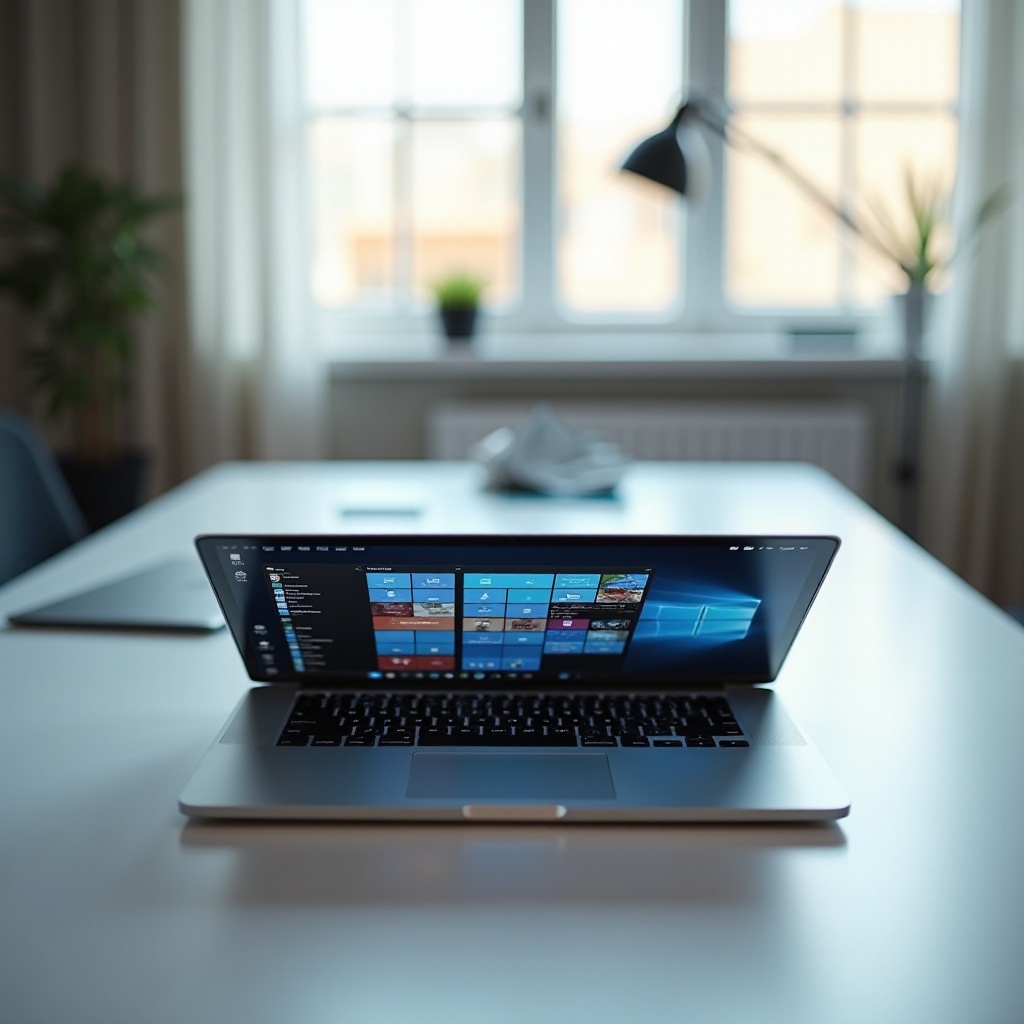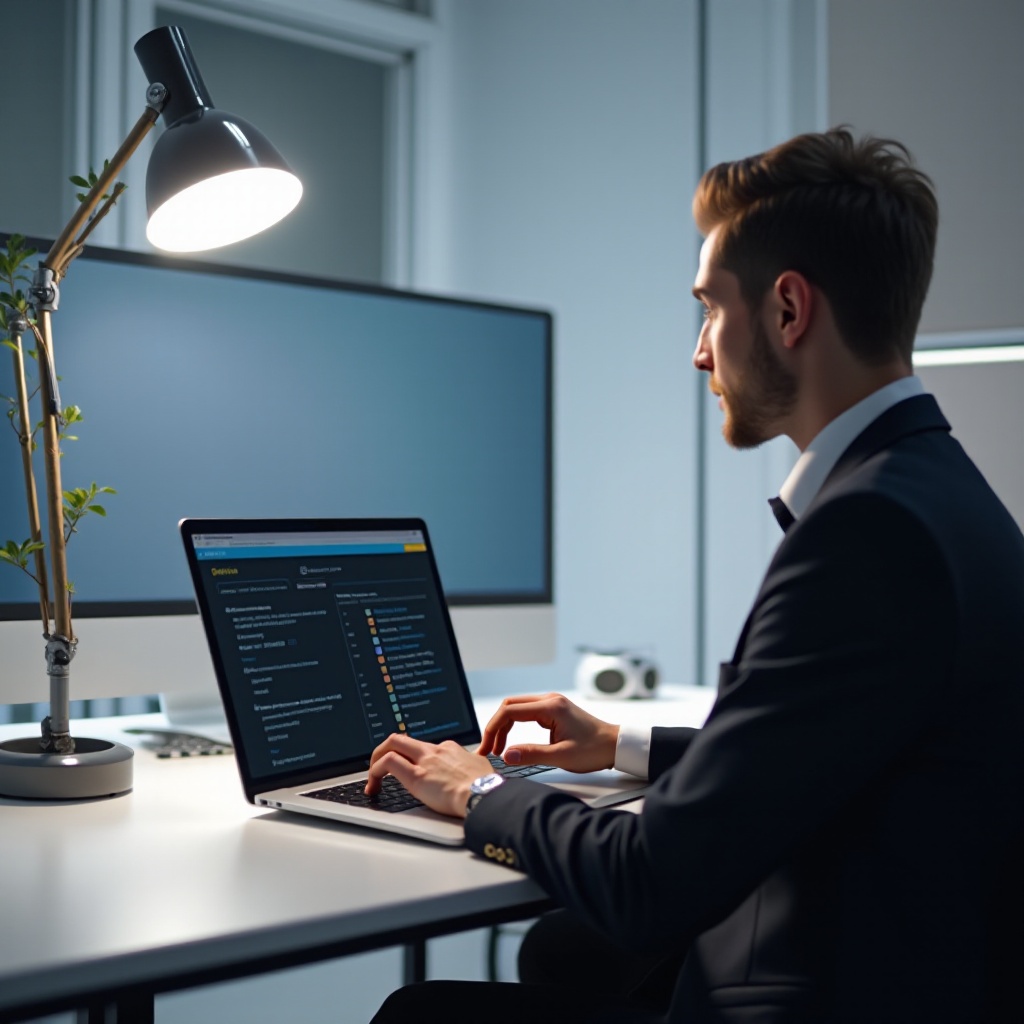Introduction
Experiencing a laptop screen flipped upside down can be incredibly frustrating, especially if you don't know how to fix it. This problem may arise due to several reasons, including accidental key presses, incorrect display settings, or graphics driver issues. In this guide, we'll walk you through various methods to resolve this issue, ensuring your screen returns to its normal orientation.

Common Causes
Understanding the underlying causes of a flipped laptop screen is the first step to fixing it. The issue can generally be attributed to one of the following reasons:
Accidental Key Presses
Accidentally pressing certain key combinations can cause your laptop screen to flip upside down. This is more common than you think, especially if you're working quickly and not paying full attention to the keys you're hitting.
Graphic Settings Mishaps
Sometimes, changes in graphic settings can lead to a flipped screen. This can happen when you update your graphic drivers or adjust display settings manually.
Software or Driver Updates
Updates to your operating system or graphic drivers can sometimes inadvertently cause display issues, including flipping your screen upside down.
Having identified these causes, it's useful to understand the solutions. Let's move on to specific methods you can use to fix the problem.
Method 1: Using Keyboard Shortcuts
One of the quickest ways to fix a flipped laptop screen is by using keyboard shortcuts. These shortcuts are easy to apply and can save you a lot of time.
Keyboard Shortcuts for Windows
For Windows users, you can restore your screen orientation by pressing the following key combinations:
- Ctrl + Alt + Up Arrow: Normal orientation
- Ctrl + Alt + Down Arrow: Upside-down orientation
- Ctrl + Alt + Left Arrow: Rotate screen 90 degrees to the left
- Ctrl + Alt + Right Arrow: Rotate screen 90 degrees to the right
Keyboard Shortcuts for MacOS
MacOS users don't have specific keyboard shortcuts for screen rotation, but you can achieve a similar result through display settings, which we will cover next.
Now that we've covered keyboard shortcuts, let's delve into adjusting display settings as another method for fixing your screen.
Method 2: Adjusting Display Settings
Sometimes, keyboard shortcuts might not work, or you may prefer a different approach. Adjusting your display settings is another effective way to solve the problem.
Navigating the Settings Menu
Begin by navigating to the display settings menu of your operating system.
Adjusting Display Orientation in Windows
- Right-click on your desktop and select 'Display settings.'
- Scroll down to find the 'Orientation' option.
- Choose 'Landscape' from the dropdown menu to set it to normal orientation.
- Click 'Apply' and then 'Keep changes' to confirm.
Adjusting Display Orientation in MacOS
- Click on the Apple menu and select 'System Preferences.'
- Choose the 'Displays' option.
- Hold the 'Option' key and click 'Rotate.'
- Select the standard orientation from the dropdown menu.
- Click 'Confirm' to save the changes.
If adjusting the settings doesn’t resolve your issue, updating or reverting your graphic drivers might be the next step.
Method 3: Updating or Reverting Graphics Drivers
Graphics drivers play a crucial role in managing your display settings. Ensuring that they are up to date can resolve many display issues, including a flipped screen.
Importance of Driver Updates
Keeping your drivers updated ensures optimal performance and compatibility with your system. Sometimes, outdated drivers can cause display issues.
How to Check for Driver Updates
- Open the Device Manager by right-clicking the Start button and selecting 'Device Manager.'
- Expand the 'Display adapters' section.
- Right-click your graphics driver and select 'Update driver.'
- Choose 'Search automatically for updated driver software' and follow the prompts.
How to Revert to a Previous Driver
If a recent update caused the issue, reverting to a previous version might help:
- In Device Manager, right-click your graphics driver.
- Select 'Properties.'
- Go to the 'Driver' tab and click 'Roll Back Driver.'
- Follow the instructions to revert to the earlier version.
Once you've handled your driver issues, it’s wise to take steps to prevent this problem from recurring.

Preventing Future Issues
Ensuring your screen never flips upside down again involves a few preventative measures.
Locking Screen Orientation
Many laptops have a screen orientation lock feature you can enable:
- Open Display settings on your laptop.
- Look for an option like 'Rotation lock' or 'Orientation lock.'
- Toggle it on to prevent accidental changes in orientation.
Tips for Avoiding Accidental Key Presses
- Be mindful of your key presses, especially if you're working quickly.
- Consider customizing your keyboard shortcuts to prevent accidental presses.
Following these preventative measures can save you from future frustration. Let’s conclude with a summary of the solutions.

Conclusion
Fixing a laptop screen flipped upside down is straightforward if you follow the steps outlined. Whether using keyboard shortcuts, adjusting display settings, or updating drivers, these methods will help you resolve the issue quickly. Preventative measures can also ensure it doesn't happen again. For persistent problems, consider seeking professional assistance.
Frequently Asked Questions
What should I do if none of the methods work?
If none of the provided methods work, try contacting your laptop manufacturer's support team. They may offer specific instructions or recommend a professional technician.
Can a flipped screen damage my laptop?
No, a flipped screen does not cause any damage to your laptop. It is purely a software-related issue that can be easily fixed through the methods discussed.
How can I prevent my laptop screen from flipping upside down again?
To prevent your screen from flipping, you can enable the screen orientation lock and avoid pressing accidental keyboard shortcuts. Keeping your graphic drivers updated also prevents related issues.
